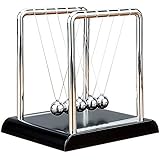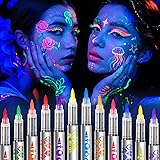Transform Your Kitchen: Mastering the DIY Epoxy Countertop with a White Marble Look
Embarking on a kitchen renovation can often present a dilemma: how can an aesthetically pleasing and durable countertop be achieved without the exorbitant costs associated with natural stone? Many homeowners dream of the luxurious look of marble but are deterred by its price and maintenance. Fortunately, a professional-grade solution is available through DIY epoxy countertop systems, which can flawlessly replicate high-end finishes right in your own home. The video above demonstrates the intricate process of creating a stunning white marble epoxy countertop, offering invaluable insights for those ready to tackle this rewarding project.
This comprehensive guide will expand upon the techniques shown in the video, providing a deeper understanding of each step involved in crafting your own beautiful and resilient kitchen surface. The goal is to demystify the process, ensuring that even intermediate DIY enthusiasts feel confident in achieving a professional-quality finish.
Seamless Integration: The Epoxy Backsplash Advantage
One of the most striking features of a custom epoxy countertop is the ability to achieve a seamless look, particularly with the integration of backsplashes. Conventionally, backsplashes are installed after the countertop, often necessitating a caulking joint where the two meet. This method, while common, can introduce a visual break and may require reapplication over time, leading to maintenance issues and detracting from the overall aesthetic.
However, a superior approach involves pouring full backsplashes horizontally first, allowing them to fully cure. These pre-fabricated epoxy backsplashes are then securely fastened to the wall using silicone adhesive. Subsequently, the main countertop pour is carefully executed right up to the edge of the installed backsplash. This innovative technique eliminates the need for unsightly caulk lines, resulting in a cleaner, more integrated appearance that requires minimal future upkeep. It truly enhances the perceived value and durability of the entire kitchen space.
The Two-Pour Method: Achieving Depth and Customization
Achieving a truly professional and three-dimensional effect with an epoxy countertop often relies on a strategic two-pour method. This process is instrumental in building depth and allowing for precise color adjustments, which are critical when aiming for a realistic white marble finish or any other custom design.
Initially, a base layer of epoxy is poured, incorporating all primary colors desired for the countertop. This base serves as the foundational canvas for your design. Subsequently, a clear topcoat is applied over this cured base. This second pour provides an opportunity to refine and adjust any colors as needed, ensuring the final look perfectly matches the customer’s vision. Furthermore, when accent colors are artfully sprayed onto this clear layer, a remarkable 3D effect is created, giving the countertop an authentic depth that closely mimics natural stone.
Precision Edges: Rolling for a Smooth Flow
Properly managing the epoxy flow over the edges of a countertop is essential for a clean and consistent finish. Simply allowing the epoxy to drip off can result in an uneven, streaky appearance due to uncontrolled surface tension. A specific technique is employed to mitigate this issue, ensuring a smooth and even distribution around the perimeter.
Before the main pour fully sets, the edges of the countertop are carefully rolled. This action helps to break the surface tension of the epoxy, encouraging it to roll over the edge in a controlled and uniform manner rather than choosing haphazard paths. It has been observed that this preliminary rolling creates a significantly smoother and more professional-looking edge, preventing the common problem of “streaking” or thin spots. Taking sufficient time during this step is crucial, particularly if the countertop surface is level, as it allows the epoxy to settle beautifully into place.
The Importance of Priming and Leveling for an Epoxy Countertop
Preparation is paramount in any epoxy project, and ensuring a level surface along with correctly primed edges plays a significant role in the final outcome. A properly primed edge acts as a protective layer and a color base, guaranteeing consistency.
It is standard practice to prime all edges with a curable pigment matching the exact desired color of the epoxy. For instance, if a white marble look is sought, the edges would be primed in white. This technique is beneficial because if the epoxy layer happens to pour a little thin on an edge, the underlying perfect color will still be visible, preventing any undesirable transparency or bare spots. Additionally, maintaining a level surface throughout the application process is key. While applying the epoxy, the roller should be pulled in both directions to ensure an even, level coating across the entire surface. Corners are often reached with a paintbrush, ensuring every square inch receives proper coverage and thickness. Remember, patience is a virtue during this phase, as organization with mixing and application allows for a steady, unhurried workflow.
Torch Application and Isopropyl Alcohol: The Keys to a Flawless Finish
Two critical techniques for achieving a flawless, bubble-free, and vibrant epoxy countertop are strategic torching and the application of isopropyl alcohol with powdered colors. These steps are vital for both the aesthetic quality and longevity of the surface.
Initially, every square inch of the countertop is lightly torched. Subsequently, a second pass is made at a 45 or 90-degree angle to ensure comprehensive bubble removal. It is crucial not to overheat the epoxy, but rather to spend adequate time ensuring all air bubbles are brought to the surface and burst. After this, a 91% isopropyl alcohol mix, infused with powdered colors, is sprayed onto the surface. The isopropyl alcohol is specifically chosen because it evaporates completely without leaving a residue, thereby preventing any yellowing, particularly noticeable in white countertops. Furthermore, isopropyl alcohol is highly effective at bursting any remaining microscopic air bubbles, contributing to an incredibly smooth and clear finish. This combination of torching and alcohol spraying truly elevates the quality of the DIY epoxy countertop.
Crafting Depth with 3D Accent Colors
The creation of a convincing 3D marble effect on an epoxy countertop involves a deliberate layering of accent colors. This process is designed to mimic the natural veining and depth found in genuine stone, giving the finished product a remarkably authentic appearance.
Each 3D accent color is typically sprayed across the entire countertop before moving on to the next color. A common strategy involves starting with the most contrasting color first, such as charcoal for a white marble design. Following this, a lightly diluted version of a complementary color, like silver, might be applied. Finally, a white pearl accent could be used to tie everything together. This methodical layering allows for precise control over the design; if an application is deemed too drastic, subsequent layers can be used to subtly tone it down, ensuring the overall aesthetic is balanced and refined. This meticulous approach to color application is what truly defines a high-quality white marble epoxy countertop.
The Skip Trowel Pattern and Drip Management
As the epoxy begins its curing process, specific techniques are employed to refine the surface and manage excess material, ensuring a clean and professional look. These steps capitalize on the changing viscosity of the epoxy over time.
Once the epoxy starts to thicken slightly, usually about two hours into the curing process, a simple skip trowel pattern can be applied. The product’s increasing viscosity allows the trowel to glide just over the surface, creating subtle textures or patterns as desired. Simultaneously, managing drips that form along the edges is crucial. Initially, when the product is still quite runny, drips should be scraped off with a putty knife. This process should be continued intermittently as the epoxy firms up. Eventually, the dripping will cease as the product solidifies. Performing a final scrape at this stage is significantly easier and more effective than attempting to sand off hardened drips later, saving considerable time and effort. A final torch pass is never a bad idea if any lingering air bubbles are observed, especially before a second clear coat is applied for added protection and leveling.
Remember, when a second coat of clear resin is added to your DIY epoxy countertop, these surfaces are afforded significant additional protection, contributing to a more level and durable finish that will stand the test of time.







